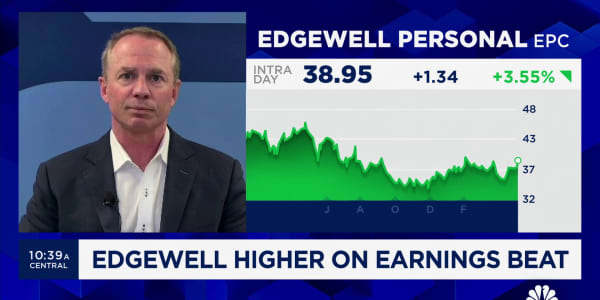Citigroup’s exposure to mortgage put-backs may be far worse than investors expect, according to a recent CNBC investigation.
Investors have largely given Citigroup a pass when it comes to put-backs—an action where investors force banks to repurchase mortgages and the securities related to them. While Citi’s rivals saw their share prices fall last month on put-back concerns, Citi’s shares rose.
Citi may be “the best in class” when it comes to mortgage put-back exposure. But it is hardly immune to put-backs.
Keep in mind that put-back exposure does not arise from mortgages Citi itself owns. Instead, the put-back issue arises from mortgages Citi sold to others, either directly or as part of a pool of mortgages underlying a mortgage-backed security.
Citi executives say there are $504 billion of these mortgages that it services but does not hold. (We call these the Serviced But Not Held Portfolio, or SBNH Portfolio for short.) These mortgages do not appear on Citi’s balance-sheet.
When selling those mortgage-backed securities to investors such as Freddie Mac and Fannie Mae, Citi would make representations and warranties that the mortgages were not defective and were in compliance with Citi credit standards.
In the event that those representations and warranties were not accurate and complete, Citi could be forced to repurchase those securities.
In the words of Citi’s annual report filed with the SEC: “In the event of a breach of the representations and warranties, the Company may be required to either repurchase the mortgage loans (generally at unpaid principal balance plus accrued interest) with the identified defects or indemnify (‘make-whole’) the investor or insurer."
Citi acquired mortgages through four primary channels:
- Direct Lending: Where Citi directly originated loans.
- Wholesale Lending: Where Citi made individual loans arranged by mortgage brokers.
- Correspondent Lending: Where Citi bought loans originated by third-parties. Some of these loans, called “underwritten flow,” were individually reviewed by Citi for compliance with Citi's underwriting standards and the completeness of their documentation. The loans in the “delegated flow” channel were not reviewed by Citi, but were delegated to the seller for review.
- “Wall Street Correspondent”: Where Citi purchased mortgages in bulk, which were underwritten by third party lenders.
In the “delegated flow” sub-channel, as many as 60 to 80 percent of loans made between 2006 and 2008–the height of the housing bubble—were “defective” (lacking proper documentation), or inadequate to meet Citi’s credit standards, according to a former Citi executive with knowledge of the matter.
What does that translate into in terms of potential overall put-back exposure for Citigroup?
To answer that question with certainty, we would need to know how much of Citi’s SBNH Portfolio originated through each of the different channels. Citi has declined to provide CNBC with this information. (See Ash Bennington’s Citi SBNH Questions, where he details “Seven Questions to Citi” on SBNH.)
In the absence of more detailed data, we’ve attempted to construct a model that describes what those repurchase liabilities may be. We’ve taken what we believe to be the riskiest loan acquisition channels—the Wall Street Correspondent channel and the Delegated Flow sub-channel—and applied a defect rate based on the estimates from our source documents.
When we apply a 60% defect rate to loans acquired through both those channels, we get a repurchase exposure of about $37 billion. When we apply an 80% defect rate to the same cross section of loans, we get a total repurchase exposure of about $43 billion.
The estimates cited above assume an equal contribution to the SBNH Portfolio from all loan channels. (We have made this assumption in the absence of data from Citigroup: the relative weighting of the loan acquisition channels may be unequal.) But we believe this assumption may be too conservative, based on the nature of the loan acquisition channels.
(We believe it may be more likely that Citi acquired a greater proportion of their SBNH Portfolio through Wall Street Correspondent channel and Delegated Flow sub-channel, simply because the ability of a bank to directly originate mortgages is constrained by the number of underwriters they can employ. The capacity to acquire mortgages underwritten by third parties would be much greater.)
If all four mortgage acquisition channels turn out to be equally as defective as those we’ve included in the above calculation, Citi’s liability for repurchases could soar to about $100 billion dollars at a 60 percent defect rate — and to around $133 billion dollars at an 80 percent defect rate.
These are very large numbers indeed when compared to Citi’s repurchase reserve of $952 million.
Based on the best-case estimate for Citi, using the $37 billion exposure number, Citi’s potential exposure could be about 39 times higher than their repurchase reserve. Using the higher exposure number of $133 billion, the ratio of potential exposure to reserves skyrockets to about 140 to one.
The market and Wall Street analysts do not seem worried. In a month when Bank of America shares suffered a double digit decline, shares of Citi were up more than 5 percent. Analysts from Goldman Sachs have said that compared to Bank of America, Citi is “well-positioned” to manage put-backs.
Citigroup’s executives argued that the probably of getting hit with a high-number of repurchase demands isn’t large.
"Citi outlined the claims and repurchases in its servicing not-held portfolio in its third quarter analyst presentation. Compared to the roughly 2.5 million unindemnified remaining in our servicing portfolio, we've received only 17,500 claims in total, of which approximately half have been repurchased or made whole. There is absolutely zero factual basis for CNBC's figure," a Citi spokesman said.
Citi may have historical data to back up that argument. But history may be a misleading indicator here. Recall that prior to the collapse of the housing bubble, many argued that there couldn't be a national housing slump because there never had been one before. Backward-looking indicators are not a sure guide to future events, as everyone now knows.
Investors are now newly aware of their rights to force the banks to repurchase mortgages and related securities. And once the smell of blood gets into the water, it may not be long until the feeding frenzy ensues.
Perhaps more importantly, Citi’s internal controls over its mortgage pipeline seem to have become increasingly lax as the housing bubble inflated, according to the former Citi executive. Many of the mortgages Citi was buying to pool for investors did not live up to the bank’s own credit policies and underwriting standards, according to the former Citi executive.
When the former Citi executive examined delegated flow mortgages in 2006, he discovered that 60 percent of the mortgages were defective. That number climbed to 80 percent in 2007, according to the former executive.
Citi was doing a $50 billion annual business in delegated flow mortgages.
When the same Citi executive examined the Wall Street Correspondent line of mortgages, he discovered that in 2006 and 2007, executives were reversing large numbers of underwriting decisions on mortgage loans from “turn down” to “approved.” Subprime mortgage pools, many over $300 million, were purchased even though they didn’t meet Citi’s credit policy criteria.
In short, the lax standards at the height of the housing bubble would seem to indicate that Citi’s put-back exposure might be far higher than it has been in the past.
The good news for Citi is that because these loans are not on its balance sheet, Citi won’t take the first loss on the loan portfolio if the underlying loans go bad. The bad news is that the investors who Citi subsequently sold the loans to could demand that Citi repurchase all of the mortgages in the pool — not just the loans in default — on the basis of off-base warranties and representations.
_______________________________________________________
Questions? Comments? Email us at
Follow John on Twitter @ twitter.com/Carney
Follow NetNet on Twitter @ twitter.com/CNBCnetnet
Facebook us @






